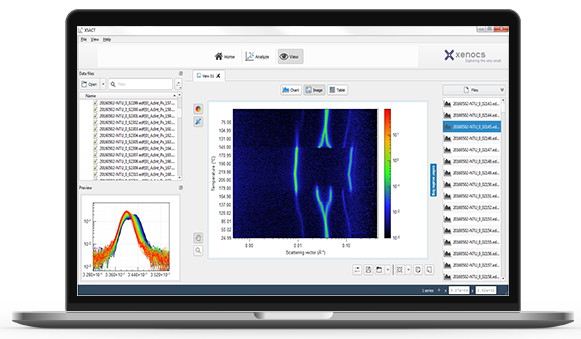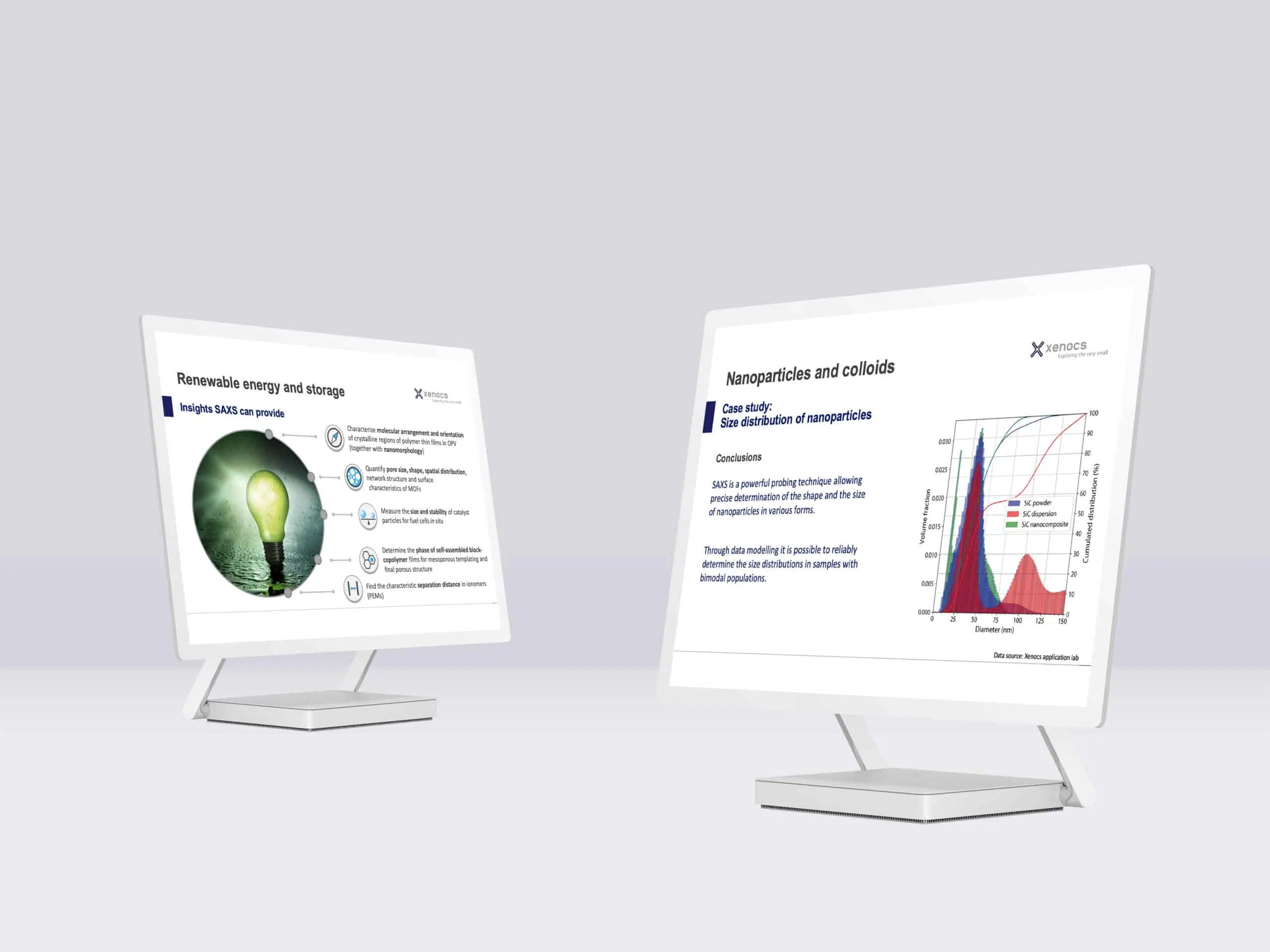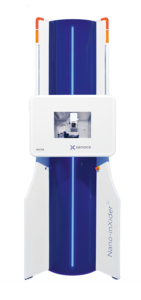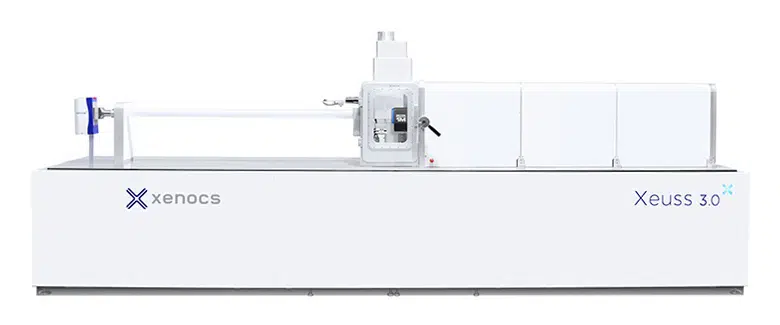Crystalline fraction
Crystalline fraction,
what is measured?
The measured quantity is the fraction of crystalline material in a polymer material.
Range of crystalline fraction accessible from WAXS measurement:
- 1% up to 90%
- Extendible down to 0.2% if accurate determination of amorphous contribution is available (e.g. using thermal protocols).

Figure 1. Crystalline fraction obtained here is of 1.1%. The subtracted curve (blue curve) is obtained by subtraction of the semi crystalline sample scattering curve and the amorphous scattering curve. The figure shows that the subtracted curve is almost noise free, leading to an accurate determination of the crystallinity. Lower crystallinity values can be easily reached.
Samples
Typical samples for this measurement are all samples with electron density contrast between the crystalline vs amorphous phase:
-
Polyolefins
-
PEKK, PEEK…
Have a look at the following application note:
Methods & standards
Standards & methods used for crystalline fraction determination:
- Peak fitting, area determination
- Phase identification
Phase identification will lead to separate crystalline fraction from mixed crystalline phases (e.g. a polymer with determination of relative fraction of gamma and alpha phase) - External references:
– Panine et al, Polymer, 2008, 49, 676-680 doi :10.1016/j.polymer.2007.12.026
– Wang et al, Macromolecules, 2000, 33, 978-989
doi : 10.1021/ma991468t
XSACT analysis software implements the above methods.

Why use WAXS for crystalline fraction determination?
Advantages of WAXS for crystalline fraction determination:
-
WAXS does not depend on difficult baseline determination or inaccurate thermal protocols. If highest accuracy requires thermal measurement, it is not a prerequisite: determination of crystallinity level is possible even from a single measurement at room temperature using wide knowledge of typical amorphous scattering contributions.
-
With Xenocs SAXS/WAXS solutions, you get absolute determination of crystallinity fraction, with no assumptions.
-
You get statistical properties averaged over the whole scattering volume (1 mm3).
-
With WAXS, no sample preparation is required.





































